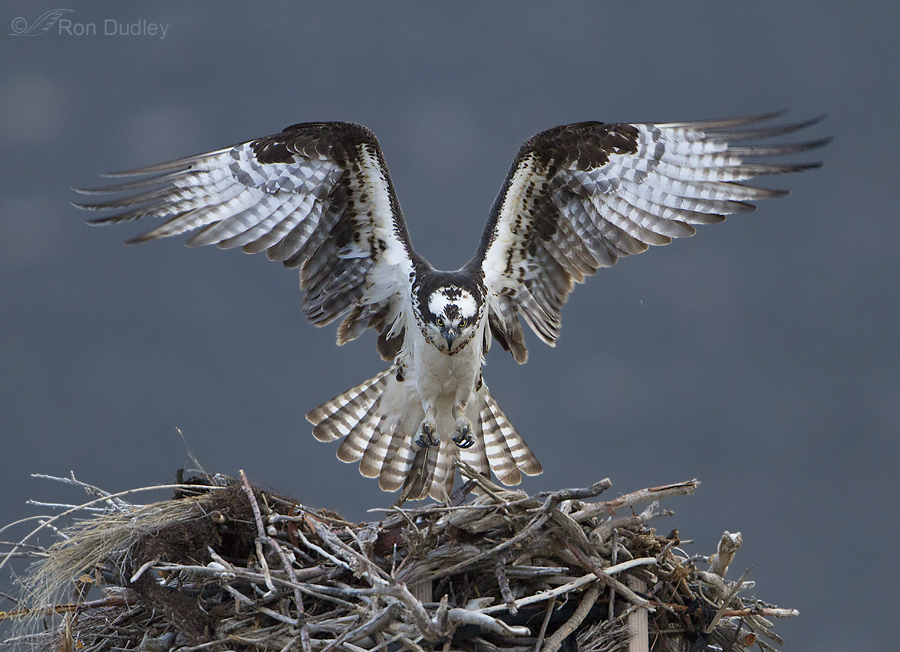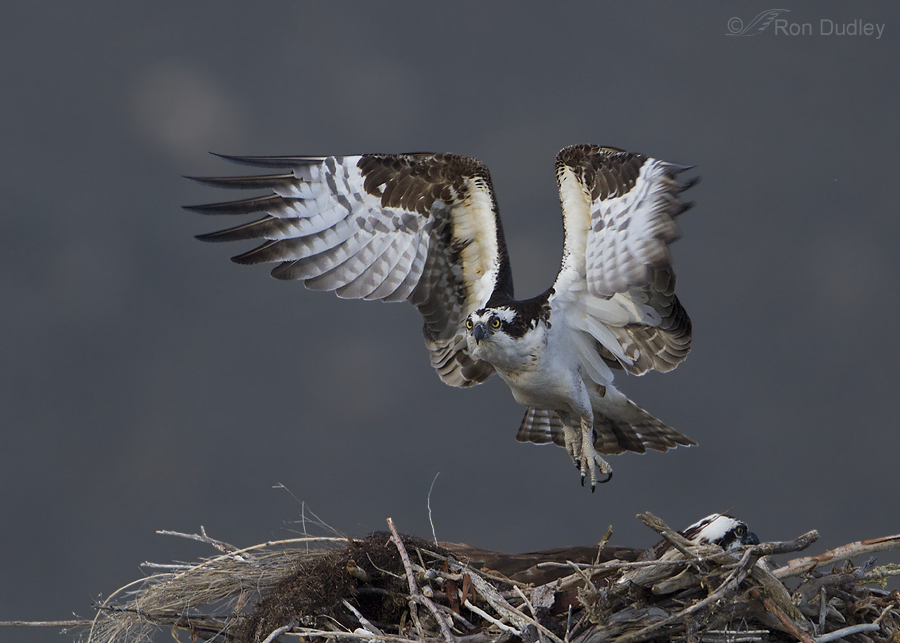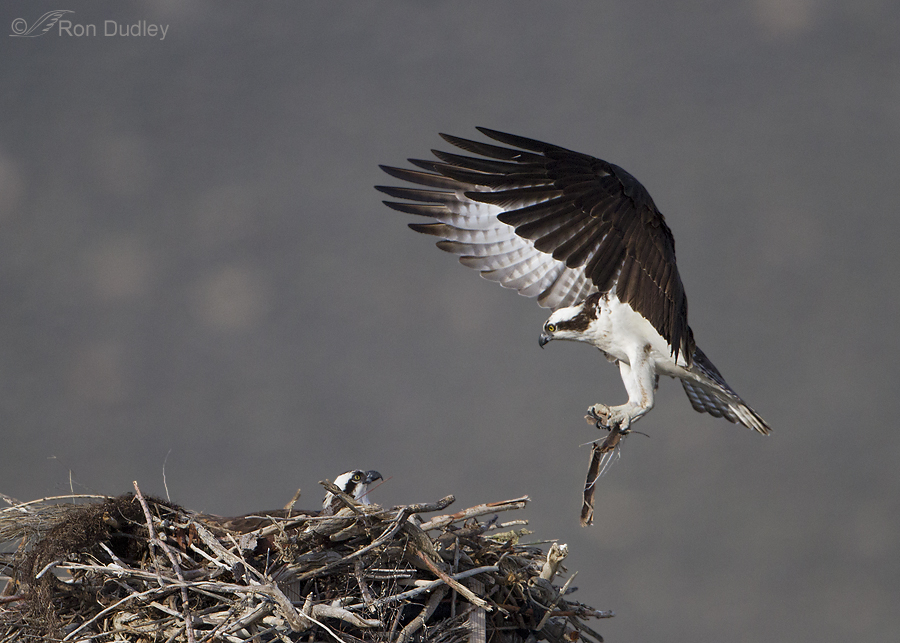Tag: osprey
Ospreys In Shooting Conditions That Drove Me A Little Nuts(er)
Flaming Gorge Osprey – An Experiment That Worked

We returned home Thursday after spending three wonderful days camping at Flaming Gorge in NE Utah. This is very close to the view we had on most mornings from our campsites (two of them), though this image was taken the morning before the Osprey photo, below. As you’ll see, the lighting conditions were dramatically different…
Flaming Gorge Osprey
The Osprey is a species that I’ve only had a handful of opportunities with but last spring I found a cooperative nesting pair at Flaming Gorge. In my mind this is a true miracle species because it has arisen Phoenix-like from the ashes of its own demise. During the 1950s-1970s their populations crashed dramatically, largely due to the effects of DDT and other persistent pesticides in the environment which caused severe eggshell-thinning and poor hatching success. But when those chemicals were banned the Osprey made a miraculous comeback and today their numbers are approaching historical highs. Part of the reason for that success has been the widespread use of artificial nesting sites. In some areas of North America, 90-95% of all nesting pairs choose these artificial sites over natural ones. The nest of this mated pair was on a pole installed for that purpose close to Flaming Gorge Reservoir. 1/1600, f/6.3, ISO 500, 500 f/4, 1.4 tc, natural light, cloned out a piece of nest platform, not baited, set up or called in This is most likely the male of the pair (less conspicuous breast band) bringing a small fish in to the incubating female on the nest platform. 1/2500, f/7.1, ISO 500, 500 f/4, 1.4 tc, natural light, not baited, set up or called in I believe this to be the female coming into the nest. 1/2000, f/7.1, ISO 500, 500 f/4, 1.4 tc, canvas added, natural light, not baited, set up or called in When the male would bring its mate a fish…
Nesting Osprey Of Flaming Gorge
There’s lots of great Osprey photos “out there” but sadly none of them are mine. I’ve tried with this species time and again and something has always gone wrong – crappy perches, poor light, couldn’t get close and most often I couldn’t even find the birds. But recently I finally got some shots of them I like. As I mentioned in an earlier post Mia and I spent three days at Flaming Gorge this week. I was delighted to find a nesting pair of Osprey as I’ve had very little luck with this species in the past. The nest was on a nesting platform right next to a boat-launching ramp so the birds were used to human traffic and went about their normal routine even with vehicles, boats and fishermen in the vicinity. There were no chicks yet but they were obviously incubating eggs. 1/2000, f/7.1, ISO 400, 500 f/4, 1.4 tc One bird of the pair was always on the nest of course but occasionally the other Osprey would fly by very close and then immediately leave again – it seemed to me that it was “just checking up” to make sure that everything was ok at the nest. I believe this bird is the male. Sexing Osprey can be tricky but on average males have fewer (if any) dark markings on chin, breast and sides of neck than do females. You’ll see what I think is the female of the pair a couple of images later. 1/2000, f/7.1, ISO 500, 500 f/4, 1.4 tc Another shot of the male…
An Osprey, A Fish And A Thieving Magpie
Yesterday Mia and I returned from a three day camping and photo trip to Flaming Gorge. We had great weather for most of our time there and as usual the scenery and ambience were awesome. At an elevation over 6000′ many of the birds that we usually see there apparently haven’t arrived yet but we spent some quality time with a pair of nesting Osprey – a species that I’ve had little luck with in the past. 1/2000, f/5.6, ISO 500, 500 f/4, 1.4 tc This pole with all the attached ugly hardware was within a few feet of the nesting platform and early one morning this Osprey landed on the pole with a freshly caught fish. At first I figured that this bird would deliver the fish to its mate on the nest (I have a lot to learn about this species) but it didn’t. It’s intention was to eat the fish itself but as you’ll see, those plans were delayed by an interloper. It didn’t take long for this Black-billed Magpie to show up and torment the rightful owner of the fish. This Osprey removed and dropped the intestines in pieces and it seemed obvious to me that the magpie had learned that particular feeding pattern and came looking for tidbits that had landed on the wires below the Osprey. Here you can see one of those bits in the beak of the magpie that it had picked off of the metal above its head. So far the Osprey doesn’t seem too…
The Bald Eagle and the Fish Hook
Last week while looking for Golden Eagles to photograph in the Promontory area at the north end of the Great Salt Lake we came across a group of adult and juvenile Bald Eagles feeding on a sheep carcass. The light angle was bad for photography but we couldn’t resist taking a few shots anyway. Bald Eagle with fish hook in bill We were quite close to one adult and when it flew off I instinctively fired off a few shots, despite the poor light. When I got home and looked carefully at those images I could clearly see this gold fish hook embedded in the base of the eagle’s bill. This bird was apparently feeding normally and I suspect that the hook will not cause it significant problems while it’s in Utah for the winter feeding on carrion. However I am concerned that, because of the position of the hook in front of the eyes, the hook will interfere with effective forward vision for fishing after it heads north in March. I hope it falls out or rusts off before that although I’m not sure if “gold” fish hooks rust at all. An internet search shows that fish hooks are an ongoing problem for both Bald Eagles and Ospreys. Ron



